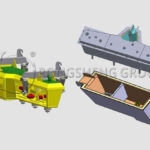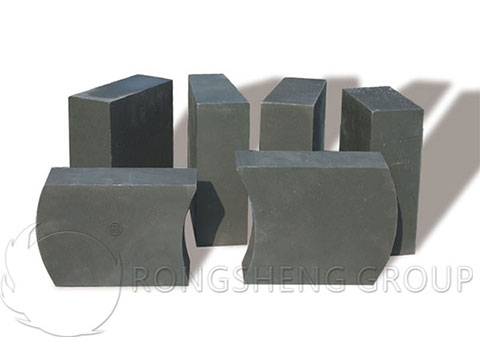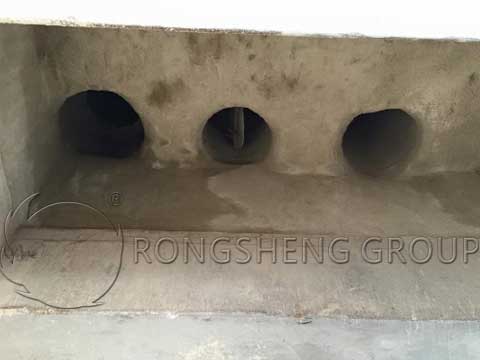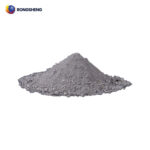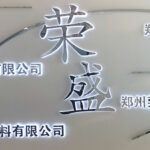Introduction of 2 Indicators that are Easy to be Confused in Refractories
The refractory industry is a big or small industry. why would you say so? From the perspective of the entire application market, whether it is the steel industry, cement industry or building materials, glass or ferroalloy industry. The total amount of refractory materials used by these companies every year only accounts for a very small proportion of the entire company’s production and application of materials. In the steel industry, even refractory materials are classified as auxiliary materials. It is said to be large because these industries cannot produce and operate normally without refractory materials. Refractories are industrial high-temperature materials that are essential for normal production in these industries. Today we combine customer cases to understand several refractory material indicators that are often confused by people.
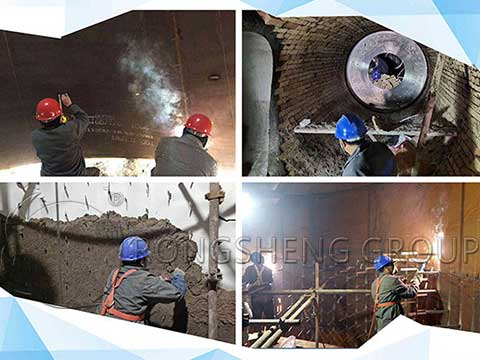
Refractory Material for Furnace Lining
[Case] The temperature in the kiln of the customer is 1700℃, and we need to find a material that can withstand the high temperature of 1700℃.
As a refractory manufacturer, we often encounter such customers who are not clear about what kind of refractory materials they use. At this time, the refractory manufacturer will ask the customer some questions about the working environment of their kiln, what is the maximum temperature, how high the long-term working temperature is, and so on. Experienced purchasers will inform the refractory manufacturer in advance of the temperature of their kiln during long-term normal operation, while some purchasing managers will only tell you the maximum temperature. In this case, the index of refractory material we recommend can fully meet the production needs of customers, and the index of refractory material is higher than what the customer needs. Therefore, the quotations for such products will be relatively high.
In the cases mentioned above, the issues that refractory manufacturers and customers are concerned about are “temperature” issues. However, this temperature problem is also a problem that cannot be ignored in the index of refractory materials. The “temperature” often mentioned in the refractory industry includes refractoriness and softening temperature under load.
(1) Refractoriness
Refractoriness refers to the ability of refractory materials to resist high temperature without melting when there is no load. At the same time, the refractoriness is the basis for judging whether the material can be used as a refractory material. According to the International Organization for Standardization, inorganic non-metallic materials with a refractoriness above 1580°C are refractory materials.
The meaning of refractoriness is different from the melting point, and refractoriness cannot be used as the use temperature of refractory materials. Refractoriness refers to the ability of a sample to resist melting under high temperature. It is different from the melting point, which is the temperature at which the crystalline phase of a pure substance and its liquid phase are in equilibrium. Unshaped refractories and their raw materials are aggregates composed of many different compounds, so they have no melting point, only the melting temperature range. The refractoriness is measured by the comparison method.
The chemical mineral composition and microstructure of the material are the most basic factors affecting its refractoriness. Various impurity components, especially those of strong fluxes, will seriously reduce its refractoriness. Therefore, material selection and high purification are very important. It should be pointed out that it is wrong to use the refractoriness index as the use temperature of general materials. Because when it reaches the refractoriness temperature, the material has been softened and has no mechanical strength. The operating temperature is comprehensively evaluated by performance indicators such as refractoriness and load softening temperature.
The refractoriness of refractory materials is usually expressed by the cone number of the standard temperature measuring cone. The specifications of standard temperature measuring cones in different countries are different, and the temperature represented by the cone number is also inconsistent. The common temperature measuring cones in the world include the German Segerkegel (SK) and the standard temperature measuring cone (ISO) of the International Organization for Standardization, China’s standard temperature measuring cone (WZ) and the former Soviet Union’s standard temperature measuring cone (ПК) and so on. Among them, ISO, WZ, and ПК are consistent, and the temperature represented by the cone number multiplied by 10.
Simply put, the refractoriness is the temperature at which the refractory material has softened to a certain degree. When this temperature is reached, the refractory material has generally melted (it can no longer be used in the furnace). And it no longer has mechanical strength or corrosion resistance.
(2) Load softening temperature
The load softening temperature refers to the temperature at which the refractory undergoes constant load under continuous heating conditions and deforms. It indicates the resistance of the material under the combined action of high temperature and load, and also characterizes the softening temperature at which the material exhibits obvious plastic deformation. Therefore, this index is one of the important basis for determining the use temperature of monolithic refractories.
During testing, the sample size is a cylinder with a diameter of 50 mm and a height of 50 mm, and a static pressure of 0.2 MPa is applied. Continuous heating to make the sample expand to the highest point and then compressed to 0.6% of the original height is the load softening starting temperature. When the deformation is 4%, it is the load softening temperature at which the deformation is 4%.
Unshaped refractory materials can be regarded as the sintering process of the materials during the test due to the large critical particle size of refractory aggregates and the unfired conditions. Therefore, compared with sintered products, the softening temperature under load is different. Unshaped refractories measured the load softening temperature of 0.6% deformation and 4% deformation, and the results only reported the temperature of deformation of 4%. The temperature has good reproducibility and accuracy. It should be noted that due to the addition of additives, the measured load softening temperature is lower. Such as low cement and high alumina refractory castables, etc., the actual use temperature is higher.
The main factors affecting the softening temperature of refractory products under load are their chemical mineral composition and microstructure. Improve the purity of the raw materials, reduce the content of low-melt or flux, increase the molding pressure, and make high-density refractory bricks, which can significantly increase the load-softening temperature of the product.
Tips from Refractory Manufacturer
There are still many misunderstandings about the use of some common indicators of refractory materials. As a refractory material manufacturer, we will organize and share more product knowledge about refractory materials with you from time to time. For more application damage analysis of refractory materials and furnace configuration, the technical team of Rongsheng Refractory Manufacturer will provide you with the most suitable solution according to your specific working conditions. To learn more, please continue to pay attention to our website.

